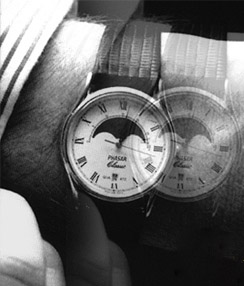Most people don’t even want to file one bankruptcy case. Why on earth would anyone want to be involved in two (or even more) cases simultaneously?
Usually the answer involves a debtor’s desperate attempt to stop a foreclosure auction so they can hang on to their home. Or, from the lender’s point of view, a desperate attempt to foreclose on the property and pit an end to a losing situation.
Sometimes debtors will file a second case before a scheduled auction hoping that an automatic stay will go in to effect with the new case, and prevent the auctioneer’s hammer from falling. Is this legal or allowable?
Well, from an analytical point of view, there are a lot of problems. Chief among them concerns the notion of property of the estate.
When any bankruptcy case is filed, all of the debtor’s property (or almost all) becomes part of a bankruptcy estate, which will be administered by a bankruptcy trustee. It is similar in concept to the idea of an estate being created when a person dies.
The main conceptual problem becomes how can one set of property be part of two simultaneous bankruptcy estates, which are now to be separately administered, possibly by two different trustees? To a bankruptcy lawyer this is a mind-blowing concept akin to a astronomer pondering multiple universes.
It is probably safe to say that this won’t fly before most bankruptcy judges, but never say never. In a recent Pennsylvania case, In re Wilkinson, the married debtors were excused for filing overlapping Chapter 13 cases.
During the first Wilkinson bankruptcy, their mortgage holder filed for relief from the automatic stay, indicating a desire to resume foreclosure proceedings despite the bankruptcy. No opposition was filed by the Wilkinson’s attorney, so the motion was granted.
Later, a new bankruptcy case was filed by a second attorney on the eve of the foreclosure to stop the sale from going through. The next day, the debtor’s first attorney filed a motion dismissing the first case. So there were two bankruptcy estates going on at the same time for about a day.
In this situation, where there was more than one attorney involved (and a hint that the first attorney may have been unable or unwilling to advance her client’s cause), Pennsylvania bankruptcy judge Henry Van Eck was willing to look the other way, ruling that it was not necessarily bad faith to file two cases with a slight overlap.
Debtors contemplating a similar move should be prepared to face hostility, however. In a similar situation, New Hampshire bankruptcy judge Bruce Harwood found that the debtors in the unpublished Jordan case were acting in bad faith by filing two Chapter 7 cases, converting one of them to a Chapter 13, and trying to avoid auction that way. Judge Harwood ruled the debtors were manipulating the system, and would lose their house, although he stepped back from deciding the big issue of whether two cases can coexist at all in the bankruptcy world.
The takeaway is that lawyers should try everything they can before creating overlapping bankruptcy estates.
